 Health Disparities - Forum with Michael Krasny Health Disparities - Forum with Michael Krasny 
RADIO SHOW available from KQED.org This episode of Forum (available in streaming audio and MP3 download) discusses "why health disparities exist between the rich and poor and among minority groups." Krasny interviews Brian Smedley, Dr. Mohammad Siahpush, Dr. Nancy Adler, and Larry Adelman, series creator and executive producer for UNNATURAL CAUSES. Originally broadcast March 26, 2008. |
 |
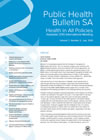 Health in All Policies: Adelaide 2010 International Meeting Health in All Policies: Adelaide 2010 International Meeting 
Public Health Bulletin South Australia Our health is mostly determined by factors outside the operational sphere of the health sector, so the health sector must move beyond managing the health care system and seriously address those determinants of health in other spheres— education, housing, transport, employment, income, welfare etc.—where they impact on health. This is the Health in All Policies (HiAP) approach.
HiAP was the focus of much discussion in Adelaide, South Australia (SA), in April this year when the South Australian Government and the World Health Organization hosted the Adelaide 2010 Health in All Policies International Meeting. This issue of the Public Health Bulletin presents papers from a number of the participants at the meeting and reflects on the meeting’s themes and outcomes. |
 |
 Health Inequalities among British Civil Servants: the Whitehall II study Health Inequalities among British Civil Servants: the Whitehall II study 
SCHOLARLY ARTICLE by Marmot, et al., The Lancet, July 1991 Twenty years after the original Whitehall study, which first identified the Health-Wealth gradient in British civil servants, the study was repeated with a new cohort of over 10,000 participants. The study found no decrease in inequality, with those lower on the social gradient still suffering higher rates of chronic disease and mortality. |
 |
 Health Inequalities in the Era of the Knowledge Economy Health Inequalities in the Era of the Knowledge Economy 
SCHOLARLY ARTICLE by Harvey Brenner, Williams Review, Aug 2006 This study looks at the question: How does worker health relate to the health of the economy in the new system, and what public policies will promote the health of both? The authors find a powerful positive relationship between the level of self-employment in a society and the health of its citizens—even in the face of frequent change in an economy where knowledge produces benefits. This suggests that policies encouraging entrepreneurship—even inside large corporations—may provide a cushion against job loss and promote a mutually beneficial cycle of individual health and group prosperity. |
 |
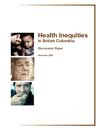 Health Inequities in British Columbia (pdf) Health Inequities in British Columbia (pdf) 
DISCUSSION PAPER, Health Officers Council of British Columbia, November 2008 This report and recommendations from the health officers of British Columbia provides one of the clearest and easiest to understand documents on health equity produced thus far. The first half defines terms, sets a health equity framework, and makes policy recommendations that are widely applicable. The second half focuses on outcomes specific to British Columbia. |
 |
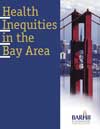 Health Inequities in the Bay Area Health Inequities in the Bay Area 
REPORT from the Bay Area Regional Health Inequities Initiative (BARHII) This report is an attempt to show how the various forces discussed in UNNATURAL CAUSES influence health in the nine-county California Bay Area, and to suggest the kinds of policy initiatives and activities that will be crucial for both reducing the disparities among populations and improving our health overall. |
 |
 Health Systems Health Systems 
REPORT from WHO Commission on the Social Determinants of Health, July 2007
The focus is on innovative approaches that effectively incorporate action on social determinants of health. Recommendations are relevant for countries with tight resources.
This is an interim report, submitted by the Health Systems Knowledge Network to develop the Commission's final report in May 2008. |
 |
 Healthy food getting more expensive: study Healthy food getting more expensive: study 
NEWS ARTICLE from Reuters Health Describes a new study that shows the price of fruits and vegetables is climbing faster than inflation, while junk food is actually becoming cheaper. Includes price-per-calorie comparison of nutritious vs. "junk" foods. |
 |
 Healthy Homes and Early Learning: Addressing Social Determinants of Health in Seattle and King County (pdf) Healthy Homes and Early Learning: Addressing Social Determinants of Health in Seattle and King County (pdf) 
PRESENTATION SLIDES from Jim Krieger, Public Health - Seattle & King County / University of Washington The slides from a presentation by Jim Krieger, one of the experts featured in Place Matters, Episode 3 of UNNATURAL CAUSES. Krieger discusses how the High Point project sought to address various social determinants of health by building healthier homes and neighborhoods. The second half of the presentation discusses early childhood development and the need to provide early education. |
 |
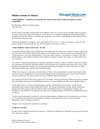 Hidden Wounds of Violence (PDF) Hidden Wounds of Violence (PDF) 
NEWS ARTICLE, Chicago Tribune, April 28, 2008 A clear and compelling article about the "secondary" negative health effects that violence has on children. |
 |
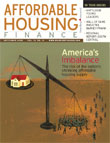 Housing as the Best Cure Housing as the Best Cure 
INTERVIEW by Donna Kimura, Affordable Housing Finance, Sept 2008 In this interview, pediatrician Megan Sandel of Boston Medical Center explains the positive health effects of good, affordable housing, comparing it to a vaccination that helps keep children healthy and prevent disease. |
 |
 How racism hurts -- literally How racism hurts -- literally 
NEWS ARTICLE by Madeline Drexler, Boston Globe, July 15, 2007 A newspaper article that describes contemporary research on the effects of racism on health.
|
 |
 How the diabetes-linked 'thrifty gene' triumphed with prejudice over proof How the diabetes-linked 'thrifty gene' triumphed with prejudice over proof 
The Globe and Mail Jennifer Poudrier, an associate professor of sociology at the University of Saskatchewan, is one of many scholars to argue that the "thrifty gene" theory allows society to curl up with the notion that biology shoulders most of the blame for the ill health of native people. She dismisses it as “a colonial lens put on aboriginal history,” promoting the myth that indigenous people all have the same genes that make their diabetes “a special problem” beyond the reach of public-health initiatives. |
 |
 How U.S. Laws and Social Policies Influence Chronic Stress and Health Disparities How U.S. Laws and Social Policies Influence Chronic Stress and Health Disparities 
SCHOLARLY ARTICLE, Holly Avey, Politics of Race, Culture, and Health Symposium, Ithaca College, Nov. 14, 2002 A clear, thorough overview explaining the stress process (exposures and vulnerabilities to stressors), physiological response to stressors (how stress "gets into the body"), and why people of color and lower socioeconomic status tend to be more negatively affected by stress. Concludes with policy implications. |
 |
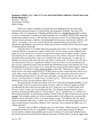 How U.S. Laws and Social Policies Influence Chronic Stress and Health Disparities - A Response (pdf) How U.S. Laws and Social Policies Influence Chronic Stress and Health Disparities - A Response (pdf) 
SCHOLARLY ARTICLE by Thomas C. Shevory, Ithaca College, 2002 A short response to Holly Avey's literature review that provides additional background and references regarding misconceptions of the character traits of "the poor" vs. "the affluent," chronic stressors, and the need for structural policy intervention. |
 |
 In The Treatment of Diabetes, Success Often Does Not Pay In The Treatment of Diabetes, Success Often Does Not Pay 
NEWS ARTICLE in the New York Times, January 11, 2006 The third in a series of in-depth articles about New Yorkers living with diabetes, this article explores the booming business of diabetes treatment and the profit incentive that hospitals, dialysis centers, medical device manufacturers and others have to exploit the growing epidemic. Programs to prevent diabetes from occurring have shown promise but many have closed due to lack of funding. |
 |
 In the U.S., we don't take enough vacations - really In the U.S., we don't take enough vacations - really 
ESSAY by John de Graaf, San Francisco Chronicle, August 2008 De Graaf compellingly makes the case for federally guaranteed paid time off for all employees by laying out the links between vacation, productivity, child-rearing, and health. |
 |
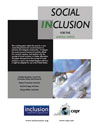 Inclusion for the United States (pdf) Inclusion for the United States (pdf) 
REPORT from Inclusion.org and the Center for Economic Policy and Research This working paper makes the case for a new, overarching framework—social inclusion—to advance and integrate social policy. It critiques the current poverty framework and the official U.S. poverty measure, and explains why the concept of social inclusion is a better alternative. The paper discusses how the concept of social inclusion is used in the United Kingdom and how it might be adapted for use in the United States. |
 |
 Indians' Water Rights Give Hope for Better Health Indians' Water Rights Give Hope for Better Health 
NEWS ARTICLE by Randal C. Archibold, New York Times, August 31, 2008 At the Gila River Indian Community, there are hopes that planned irrigation will help combat an obesity epidemic and soaring rates of diabetes. This article discusses the water settlement and the challenges the tribe faces in translating their restored water rights into real health gains for the community. |
 |
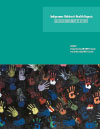 Indigenous Children's Health Report: Health Assessment in Action (pdf) Indigenous Children's Health Report: Health Assessment in Action (pdf) 
REPORT, ed. Janet Smylie and Paul Adomako This report documents what we know about the health of Indigenous children (from birth to age twelve) and evaluates the quality of Indigenous child health data collection in Canada, Australia, New Zealand, and the United States. Similar exclusionary social policies active in all four countries are at the root of these profound and unjust differences in child health.
|
 |
 Inequality is Unhealthy: Dr. Stephen Bezruchka on How Economic Inequality is Dangerous to our Health Inequality is Unhealthy: Dr. Stephen Bezruchka on How Economic Inequality is Dangerous to our Health 
VIDEO INTERVIEW on Democracy Now! As lawmakers continue to debate healthcare proposals, Democracy Now takes a look at how the economic crisis can impact the health of people in this country. They speak with Dr. Stephen Bezruchka, professor at the University of Washington’s School of Public Health and series advisor, who has written extensively on the impact of societal and economic inequalities on the health of a population and argues that combating inequality might be the best way to ensure improved health. |
 |
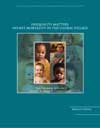 Inequality Matters: Infant Mortality in the Global Village Inequality Matters: Infant Mortality in the Global Village 
REPORT by Ronald David, from the Joint Center Health Policy Institute, 2008 This background paper seeks to expand our understanding of the causes and effects of infant mortality within a broader global context. It offers comparisons between infant mortality in the U.S. and in other nations across the globe, providing a compassionate examination of the impact of social and economic inequalities on population health and infant mortality. The author concludes with policy recommendations to help mitigate or eliminate the inequalities that contribute to infant mortality. |
 |
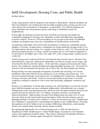 Infill Development, Housing Costs, and Public Health (pdf) Infill Development, Housing Costs, and Public Health (pdf) 
EDITORIAL by Rajiv Bhatia, Director of the San Francisco Department of Public Health’s Occupational and Environmental Health Section While acknowledging the great potentials of infill development to curb sprawl and revitalize city centers, Bhatia calls attention to the great need for decision-makers to consider the needs of existing residents. Among other things, he recommends a Health Impact Assessment (HIA) for affected communities during the planning process. |
 |
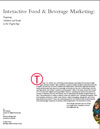 Interactive Food & Beverage Marketing: Targeting Children and Youth in the Digital Age (pdf) Interactive Food & Beverage Marketing: Targeting Children and Youth in the Digital Age (pdf) 
REPORT from the Berkeley Media Studie Group
This report looks at the practices of food and beverage industry marketers in reaching the youth of America - specifically African American and Lation youth - via digital videos, cell phones and interactive games and social networking sites. The piece also provides recommended steps to limit marketing to children and adolescents so that today's media culture can "serve the health of our children rather than undermine it."
|
 |
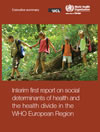 Interim first report on social determinants of health and the health divide in the WHO European Region Interim first report on social determinants of health and the health divide in the WHO European Region 
Sir Michael Marmot on behalf of the WHO Although health has improved for many people, there are major inequalities in health - within and between countries - across the WHO European Region. Evidence shows that these inequalities should be mostly avoidable and has significant human and economic costs. Unless action is taken, the gap between and within countries will increase. The WHO Regional Office for Europe commissioned a regional review of the health divide and inequalities in health from July 2010 to 2012 in order to inform the new health policy for the Region. The first phase of the review is assessing levels of inequalities in health across the European Region and identifying the barriers to and opportunities for reducing these. |
 |
| « Prev 1 | 2 | 3 | 4 | 5 | 6 | 7 | 8 | 9 | 10 | 11 | 12 Next » |




